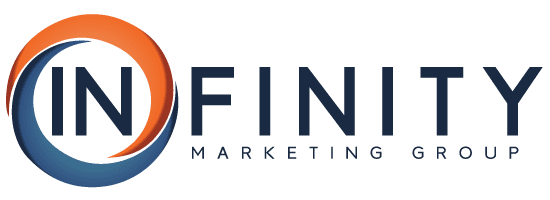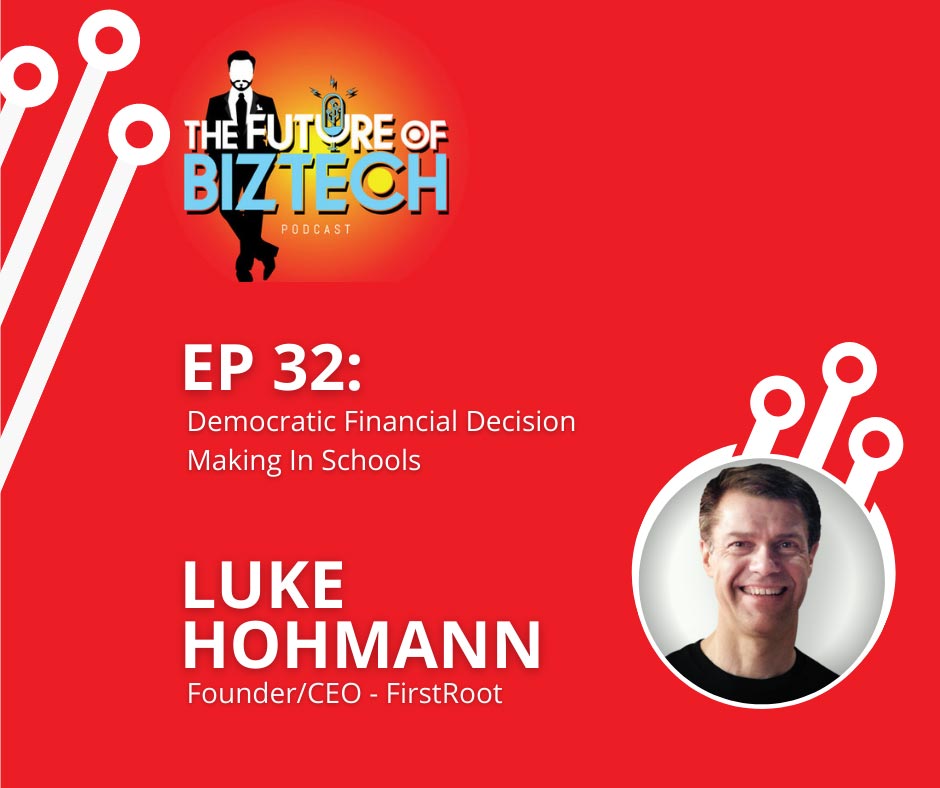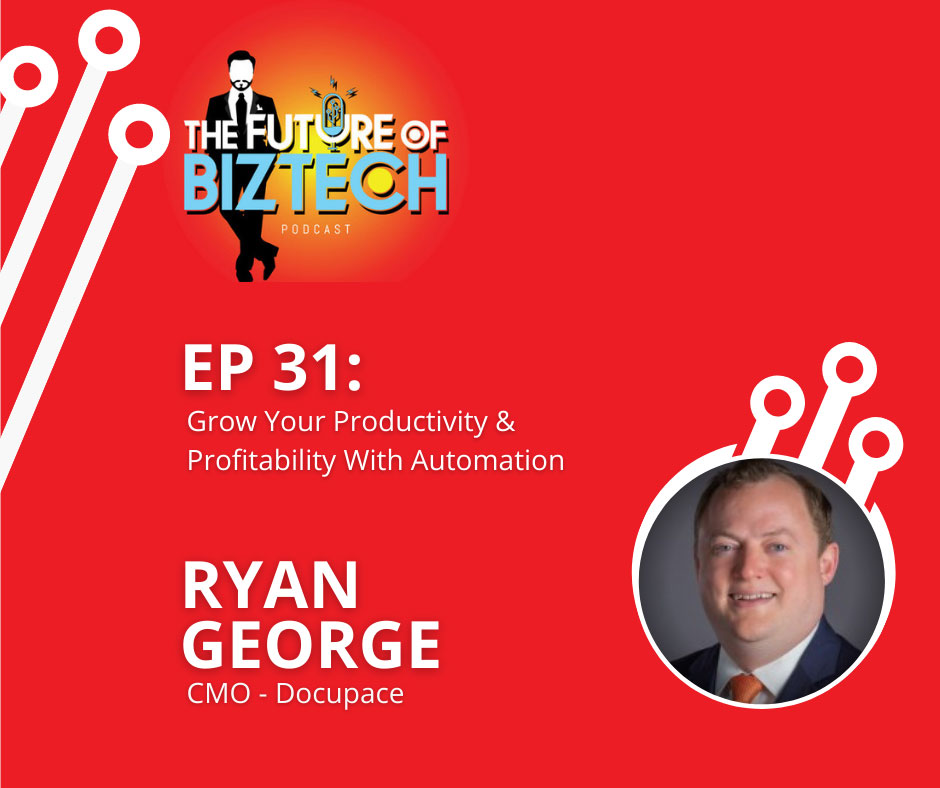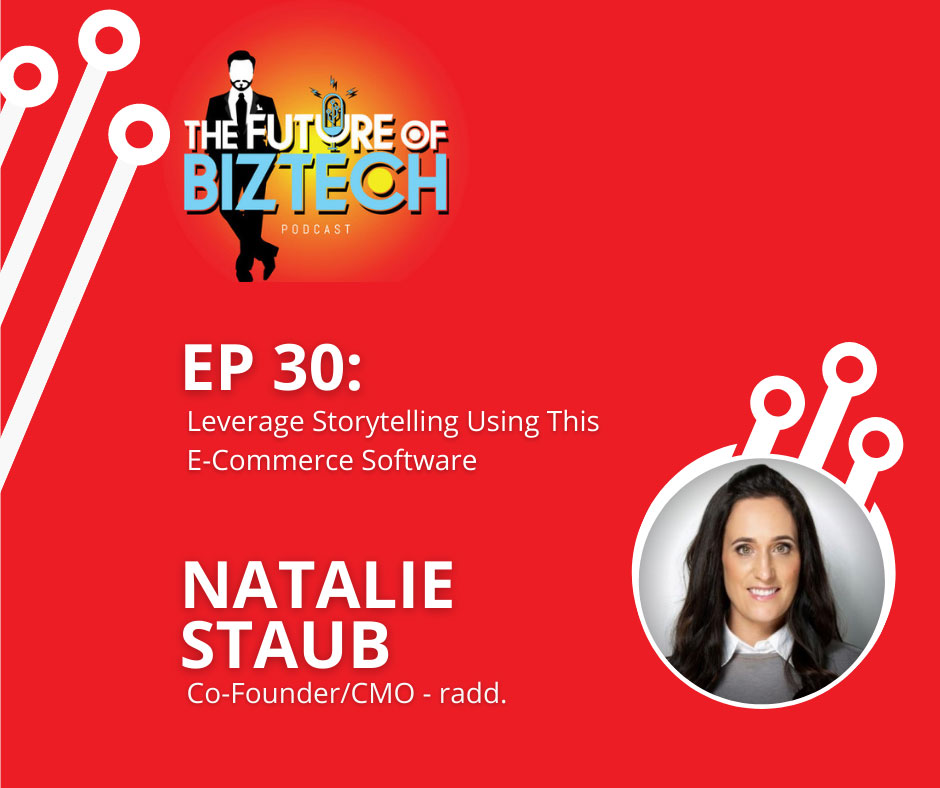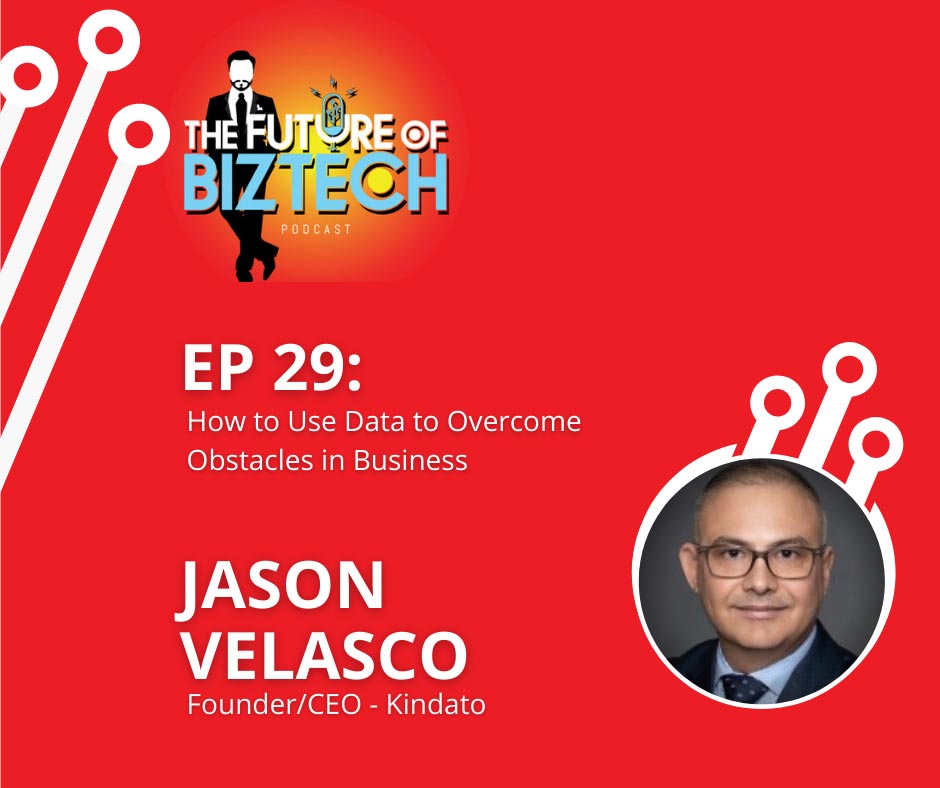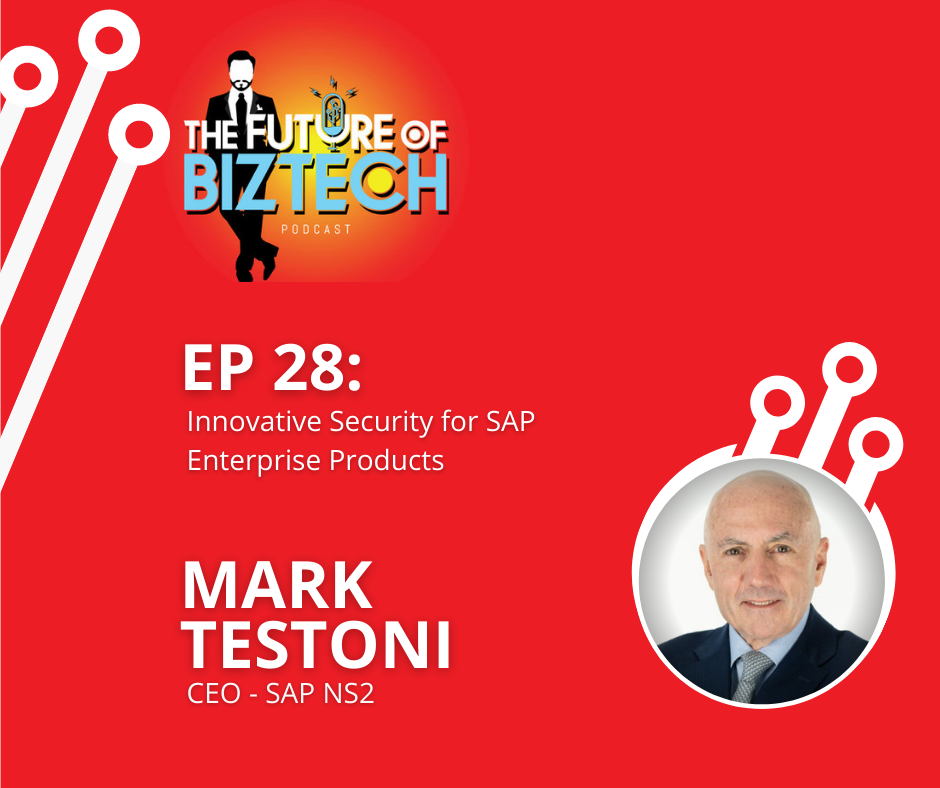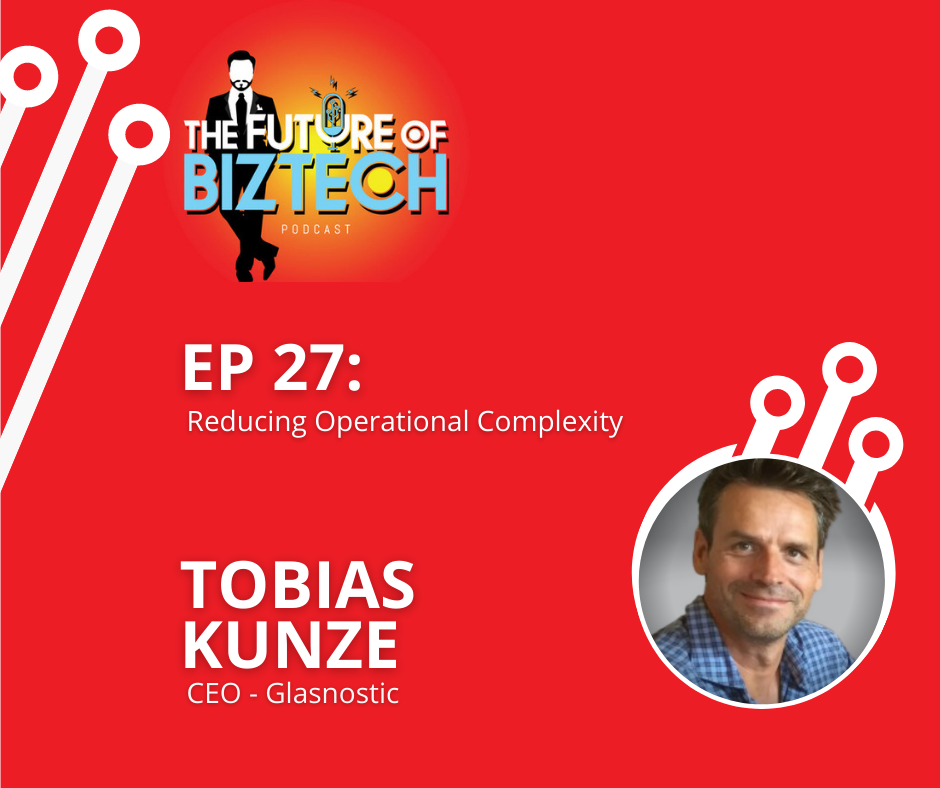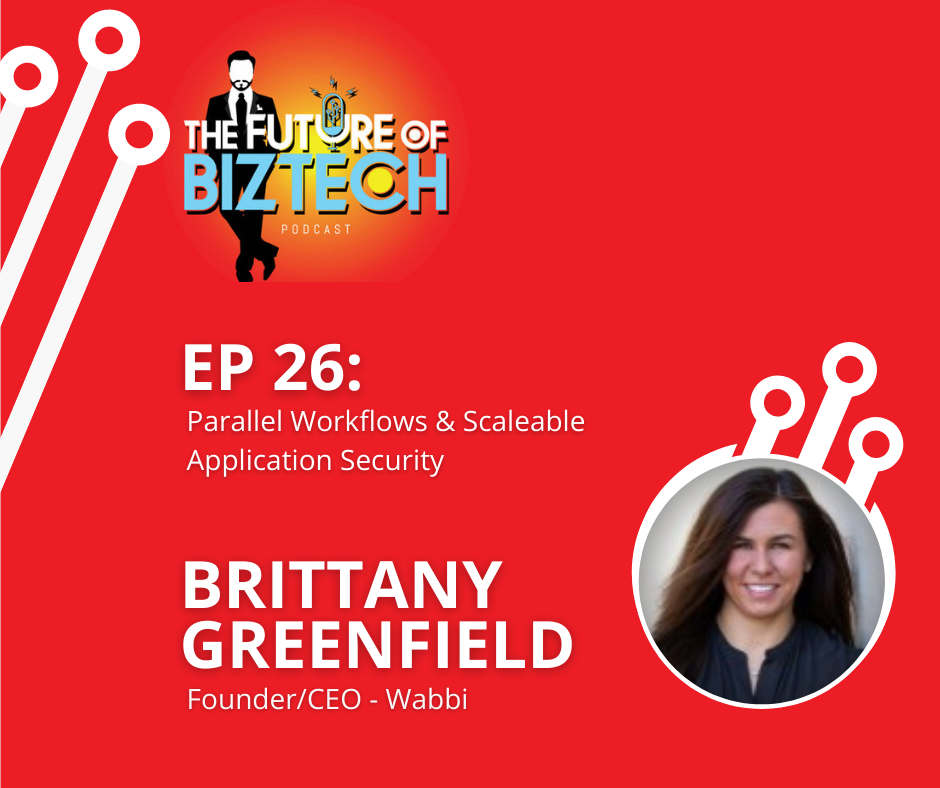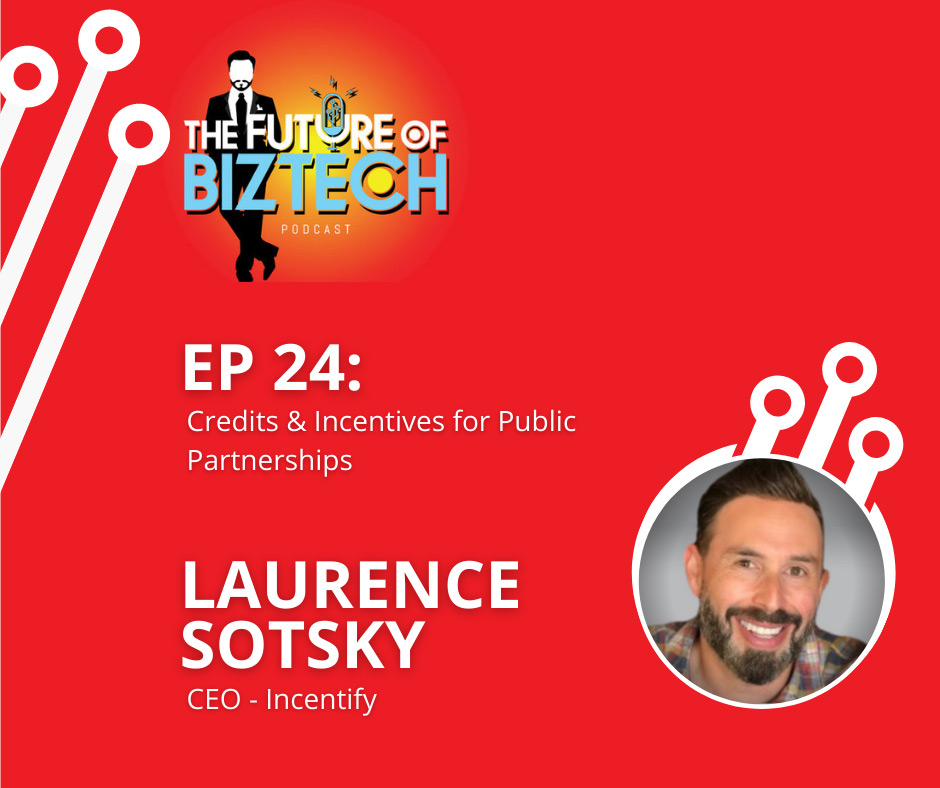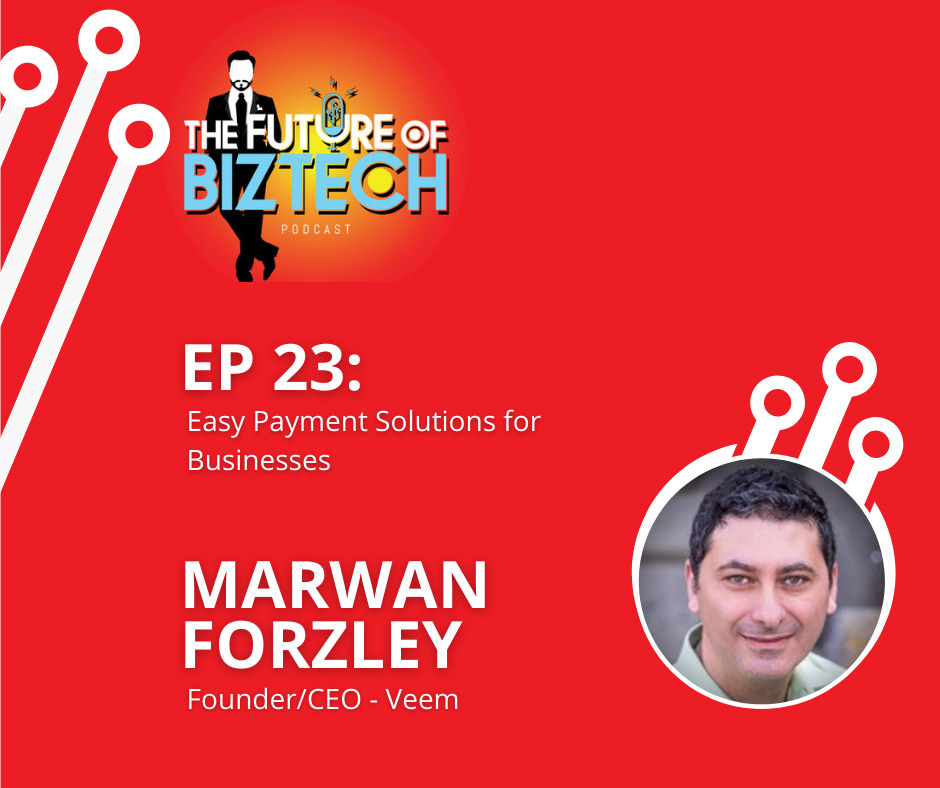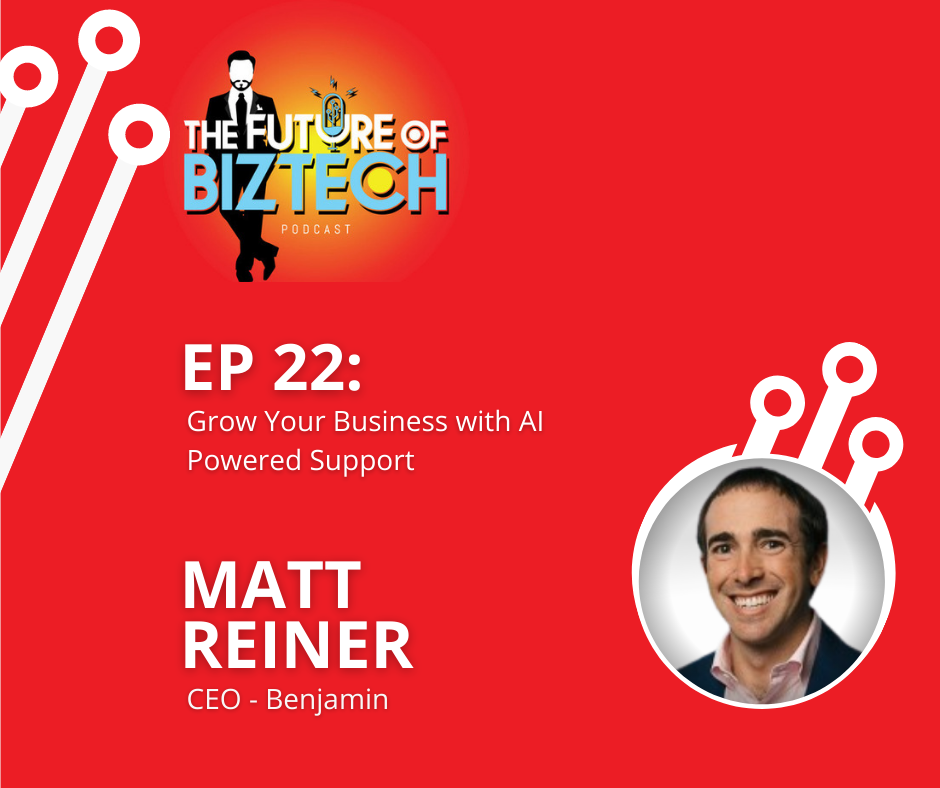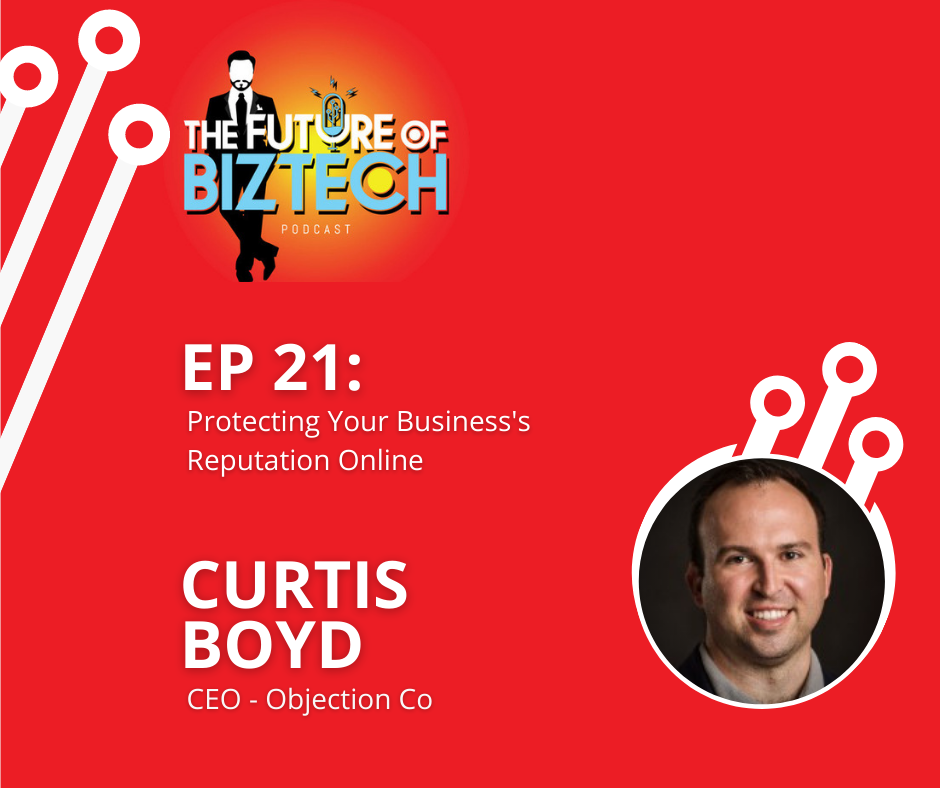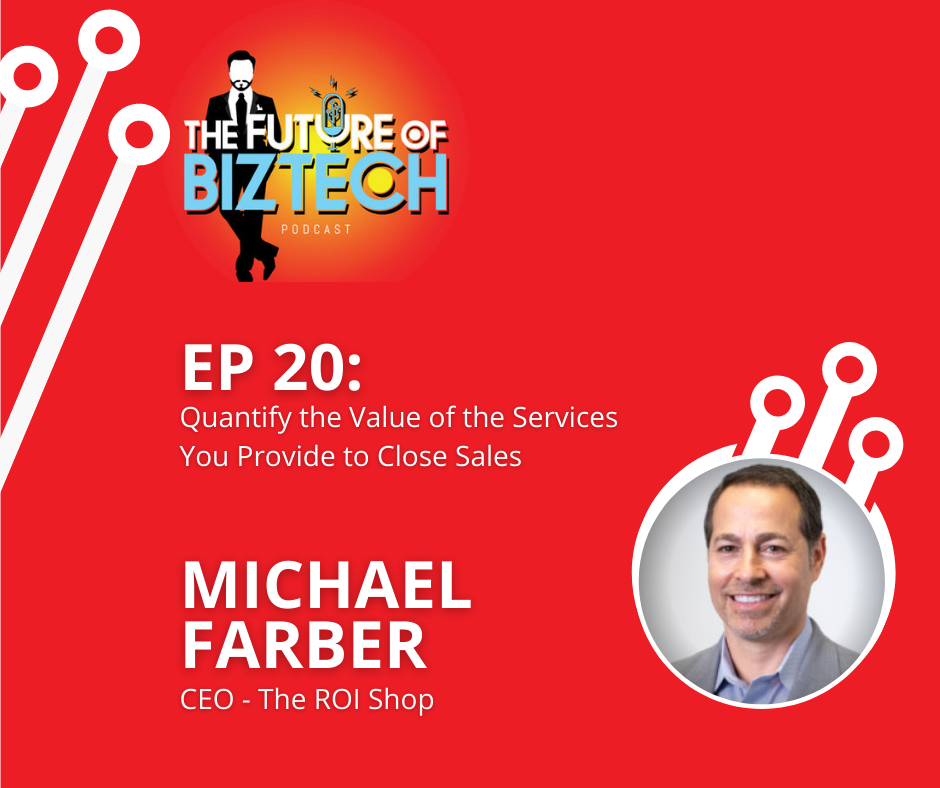Learn more about FirstRoot at: https://firstroot.co/
Find Luke Hohmann on LinkedIn here: https://www.linkedin.com/in/lukehohmann/
JC: Welcome everybody to another episode of The Future of BizTech. I’m your host, JC Granger. I have with me here, Luke Hohmann the founder and CEO of First.. is it FirstRoot?
Luke: FirstRoot
JC: Just making sure I got it right.
Luke: You did. You nailed it, man.
JC: Well you know, cause you know, I work with a lot of data companies and you know, you can hear like “root first”, you know, things like that so..
Luke: Or they give you like 16 different letters that you can’t say or spell, but it was a unique URL. And you’re like, “no, that’s not really the best way to name your company”
JC: Luke, thanks so much for being on the show here. Why don’t you tell the audience a little about yourself and what it is that you do?
Luke: Thank you so much for having me and hi everyone out there in podcast land. My name is, as you know, Luke Hohmann and I’m a serial entrepreneur. So I’m one of those people who live in Silicon Valley, who loves starting companies who loves building them up, solving a new problem, and then typically selling them and then doing it again.
Our particular company right now is focused on a social mission. So it’s a benefit corporation, which means it’s not a nonprofit, but it’s not a regular corporation that has no awareness of its social mission. And I see that too much right now, JC and Silicon valley, right? We’re seeing tech companies being started for maximization of profit with no awareness of the impact of that social mission it can have in society.
Like we see, for example, the negative impact of advertising. And social media and how it depresses happiness within a community. Right? Because if, if all you see is advertising, then all you’re reinforcing is something that’s missing, as opposed to some, you know, it’s a, it’s a scarcity mindset, not an abundance mindset.
So what I decided to do was take my experience in building participatory budgeting solutions in business and bring it into schools to teach financial literacy. And I’ll pause because there’s probably a lot there that you want to ask about. But one of the things that is important is to know that this isn’t a new idea for me.
My last company was tackling the annual budgeting process of large companies, which is awful, right? You basically fight other people in the company over the limited budget. So what we did was we created a technique that made that process of kind of antagonistic process into a collaborative process.
And our clients were really big companies that you would know, Cisco, eBay, BMW Daimler, global distributed teams who had to manage hundreds of millions of dollars of budgets and try to find consensus. And that was a B2B software play. And so I built that up, ended up selling it to a bolder company, not too far from where you are.
And then I started looking at. PB and the public sector participatory budgeting with citizens in cities to help set budget priorities and help allocate budgets. And then in schools. And when I started doing it in schools, this magical thing happened. Kids for the first time in many cases, especially when they were a low income or minority kids, they were trusted with money and made decisions with money. So our tagline is we teach kids how to manage money by giving them money, to manage and supporting them in learning how to manage money as they make investments in their school.
JC: That’s really cool. I mean, so it’s funny, you know, with this podcast, I’m usually speaking to kind of like your previous company that you had, right? Typically you would have been a guest because of that previous software. But when I saw this come across and I played it, I couldn’t give it up. Technically speaking, it’s still, I call it quote “B2B” because you know, you’re not going direct to consumer. You are actually, uh, working with institutions here in this case, you know, education.
And, you know, you know, I have a 15-year-old daughter, so, you know, when I saw this, I thought, man, that would’ve been so cool for her to have at a younger age. And I think also, you know, obviously this can be something that, that goes through all the ranks, you know, in high school and whatnot too, pretty much any age, it sounds like this would be beneficial and useful for, especially when you get up into the higher grades because they really do have budgets to work with too, right?
So my question is this. Your company provides, you know, you raise money. I imagine somehow, and to give to a school and then the kids can, can decide where that budget goes. My question is, can you also give it just as a tool? Let’s say, cause there’s only so much money you can give out. Right?
So let’s say there was a high school out there that wanted to use it as more of a practice, right? More of an exercise. And you know, there wasn’t funding for them or maybe they already had funding that because they raised enough money and they were trying to figure out what to do with it. Um, are you able to then give that out without funding it as well?
Luke: Yeah, boy. Without realizing it, you have hit one of my trigger points. Everyone should know at the podcast. There’s like no secret plan between JC and me. He did not know that that was one of my trigger points. Truthfully.
JC: I thought it’d be such a cool thing, you know, for price was my daughter’s in high school, you know, and they raised good amount of money, but she tells me how, like, you know, it’s like, well now what do we do with it?
Right. Kind of thing. And there’s always these, you have the student body that try to do it. Right. But it sounds like your software could really help enable more democratic style.
Luke:Yeah, that’s the whole point you want the whole school involved. And so, uh, let’s talk about that money. Let’s really drill into that.
The first is the amount of money. And what we find is that at a relatively small amount of money is needed to create the educational impact that we seek. So it’s really between $2,000 and $10,000 on a school basis. Now we have seen schools give as much as $50,000 to the students to manage. But if you think about it from an educational standpoint, you want enough money to be meaningful.
$10,000 is meaningful for the kids at the school, but not so much money that parents would step in and take control. So if I walked up to you and said, Hey, your daughter’s class, your daughter’s school is 10K. You’d be like, oh, that’s cool. But if I walked to pew and said, Hey, your daughter’s class and your daughter’s school has $500,000. You’d be like, wait a minute. What are they going to do with it? Yeah. Are you with me?
JC: Yeah
Luke: So you’ve got to build up trust in the second question. That’s related to this as well. And you mentioned it what’s the source of the funds. There are three sources of funds for the kids. The first is the principal in every school has discretionary funds even in the current funding of, of the recent Beida administration’s economic recovery, there’s actually funds that are being given to principals under their discretion to help make the school better and what better way to make the school better than to engage the kids. And those funds are called Esser funds, E-S-S-E-R funds. So what better way for a principal to know what the students need than to engage the students. And I’m going to come back to that specifically. The second source of funds is the PTA or the PTO, the parent-teacher association.
And the third source of funds is really exciting. It’s in partnership with corporate social responsibility programs. We’re working right now with Salesforce, where a Salesforce executive made a small donation to a school in Hills in San Mateo, California. Hillsdale high school, Salesforce matched that donation.
So they were able to increase the budget given to kids. So those three sources are pretty good. And there’s a fourth source as a public benefit corporation. We are using some of our investor’s money and our investors know this, but we’re using some of our investor’s money to actually kickstart participatory budgeting programs at title one schools.
So we’re actually helping get schools who really are economically disadvantaged to get them going. So I’m going to hold on that, see if you have any questions, but I really also want to talk about the trigger point, which is this notion of practice of a process.
JC: So I want to go to the back a little bit, circle back to how you’re funded.
So let’s talk a little bit about your model, right? So first you have a specific type of business model that most people are not aware of. People understand the 501c3’s and they understand, you know, C quartz. Well, you kind of have this middle ground. Tell us a little bit about how your company is structured and what that just means as far as how you’re funded.
How maybe you’re taxed. You know, things like that cause you’re in the middle.
Luke: Yeah. So the easy one is the taxation policy. A benefit corporation is taxed like a regular C Corp. So from the government’s relationship to us from a tax perspective, we’re regular and there’s no intrinsic tax advantage.
The difference of a benefit Corp from a regular C Corp is how we make decisions. So let’s use Patagonia as an example, because that’s one of the best-known benefit corporations on the planet. They’re huge, right? More than a billion, they do a lot of good in the world. Patagonia recently made a decision that was controversial.
They no longer make logo gear clothing, like selling a coat with a company’s logo on it. The reason they no longer do this is because they found that when people change jobs, they throw out the logo gear of the old job, right? You don’t wear your old employer’s coat anymore. And since Patagonia’s point is we don’t need as much clothing and we shouldn’t keep wasting clothing.
They stopped making logo gear because they don’t want to contribute to the waste. Now let’s say you’re a shareholder in Patagonia. A traditional corporation is designed to maximize profit and you could actually, if you were big enough and prominent, I’ve caused a problem for Patagonia to say, Hey, wait a minute. The board of directors just made a decision. That’s going to actually lower my profit, but the benefit corporation structure provides a legal structure that protects the decision-makers from making decisions that are beyond just a pure profit decision.
So in a normal corporation, the shareholders could sue and say, Hey, look, you’ve made some choices that are depressing, our profit, but in a benefit corporation, If the decisions that you’re making are consistent with your public benefit charter, you are legally protected.
So for example, let’s go back to the First Root school fund. I’m taking some of my profit. I’m taking some of our investor’s money and we’re specifically funding schools that need help. You could argue, wait a minute. That’s supposed to be money that is advancing the product. It’s supposed to be money that over time has returned to me as a shareholder.
Cause I’m gonna, you know, and all of my companies, right. You know, you can think of a company as a product. Eventually, it’s going to get sold either through an initial public offering or by selling the company. So you’ve got to build an attractive offering. Does the investors could say in the shareholders of first route could say, wait a minute, you’re not maximizing your profit, but I want to make sure that people who would do invest in our company know that our commitment is to fighting economic inequality, which means we may at times make decisions that are in alignment with our social mission while we are also achieving a financial return.
JC: So it’s basically a shift from a shareholder responsibility to the mission responsibility. More than that.
Luke: Exactly
JC: Yeah that I love. That’s really cool. Well then now let’s check. I mean, I’m a marketing guy, you know, we made a little talk, you know, a pre-show here, so I always loved the marketing questions. What are you guys doing from a marketing standpoint to get the word out about, First Root?
I mean, how are people hearing about you? Are you doing, you know, Facebook ads? Are you doing organic? Are you, I mean, obviously you’re on this podcast, but you know, what is the strategy for you guys to get in front of these schools so that more people can take this on? You can help.
Luke: Well, believe it or not a big part of my strategy is talking with people like you.
I’m very thankful to be on this podcast. I’m a writer. That’s what I do. I write, I’ve written four books. I write a blog for First Root. I actually post an update on our company every single day on LinkedIn. And so writing’s my thing. And what I’ve learned enough about podcasting to know it’s like, it needs people like you and, and I’m, I’m a better guest than a host.
The other thing that we’re doing is, I’m explicitly not using Facebook to drive awareness through ads because I’m not a fan of social media-driven advertising. It actually creates a lot of ill in the world to have, you know, what an advertiser is selling Is it selling a human to a company? And I know we need ads and ads have a reasonable place in the world, but when you actually look at like the social media algorithms, they tend to emphasize the negative part of human behavior, not the positive part.
And I don’t want to get around that. So how are we getting awareness out? The most important strategy that we are putting in place is leveraging social media in a positive way. So when students go through our program, they can, when the program is being run and when the program is finished, they can share through social media the proposals that they made that were then implemented by the school. So let’s say a proposal.
One of the schools we work with is a Purdue Polytechnic high school in Indianapolis and the kids there wanted a mini library. When that is finished, they have a link in social media that they can share. Look what I did with the rest of the students in the school, look what we created.
That’s a positive social media application. And of course, when the students are sharing. The results of their ideas of their work on social media, we get the benefit of student-led growth and awareness. And so if we can kind of frame it the right way, the students are going to be the ones who drive our awareness as along with parents and teachers, which goes back to this question that you had, which was my trigger.
You said, well, what if we didn’t give kids real money? And what if we just gave him practice? Well, what happens when you give kids practice is you get a fake behavior and I’ll give you a really concrete example. I have four kids, two in college, two in high school. And I remember how excited I was when one of my kids said, dad, I’m taking the business. You know, business math class at school, and we’re going to do a stock market simulation.
JC: I was just going to say, that’s the biggest fake behavior medium there is, is stock markets. Cause there’s when you’re playing with your own money versus right. Monopoly money, oh, your actions are completely different.
Luke: Your actions are completely different. And I was like, I, cause I had never done this and I had never seen this. I was like, Aw, I’m like, this is really exciting. And so he, he comes home and I said, What’s the assignment. He said, oh, here it is. We’ve got a hundred thousand dollars. We’ve got eight weeks. Whoever makes the most money wins.
I said, okay. Chris, Chris, that is exactly opposite everything. My mom and your mom, and I believe in value-investing. This is everything opposite what we’ve been teaching you, you know, for years we’ve had a five 29 plan to try and help. You get through college. We, you know, like if that’s your plan, you might as well go to Vegas and roll red seven yeah.
JC: It’s like day trading versus, you know, like long-term investing, right. I mean, that’s basically, they were in the exercise.
Luke: Yeah and so JC that’s why we don’t. Um, I don’t say we reject it, but we are very strongly opposed to practice because practice doesn’t have the same meaning. When you look at what kids do with the money, the data is overwhelming.
The kids create an educational infrastructure that makes their life better. That lets them go to school. And sometimes the link between what the kids choose and the critical need for education and how it affects them is not always apparent. So you’re a dad. You said you had a 15-year-old daughter. Can I give you a gut punch?
JC: Sure, let’s hear it.
Luke: Okay, everyone be prepared. This next one is a gut punch. We did a program with the Academy of American studies in Queens, New York, and the number one item created, gone through the process. And I’ll explain the process next and voted on and funded by the kids was feminine care products for the girl’s bathroom and the way they framed it was menstrual products for the girl’s bathroom. And I brought it to my family and we were talking about it at dinner. And my wife instantly says, you know, honey, you guys are just so clueless. I think about it. You’re a young woman, it doesn’t matter actually that you’re a young woman, you’re a woman and you know, you’re menstruating and you don’t have the right feminine care products.
Are you going to go to school? No, you’re going to stay at home because you’re, you don’t, you’re embarrassed. You don’t want to go out.
JC: And like I said, that’s a bigger thing in more poor communities too.
Luke: It is huge
JC: We’re looking at, we’re looking at it through our lens. I mean, we’re both from the bay area, you know, we’ve done well for ourselves and, you know, our families are taken care of.
And so, you know, my first instinct was like, wait, well, she has that. And I’m like, well, okay. Yeah, but that’s not how everything is everywhere, right? There are plenty of areas where, you know, and I grew up actually not well at all. I mean, I grew up in a very poor neighborhood and for parts of my life, and I was very poor for parts of my life, but I’m also not a woman.
So taking that aside, my point is that my first gut instinct was well. Yeah. But my daughters has those things, but..
Luke: But what if she didn’t right?
JC: Exactly, exactly. That’s not prevalent yeah.
Luke: And we’re talking about educational equity and other kinds of things. And then we realize that. You know, there’s sure you want to talk about the science lab, that’s great. But if the kid’s not even in the classroom, the science lab doesn’t matter.
JC: Yeah
Luke: And you know, we see that kind of stuff repeatedly in participatory budgeting programs in these low income or minority communities where they just don’t have the same access or, you know, even with my own kids, you, you look at what banks you know, do – It’s awful, right?
Banks, the way banks make money is actually on a U curve. What they’ll tell you is, you know, we’re not targeting minorities. We’re not targeting low-income people because we make a lot of money when people are successful which is not entirely true, right?
JC: They make money off late fees, things like that.
Luke: Bingo
JC: Yeah. That’s where the real money’s made. I mean, they do make money off people paying. They make more money off them paying late or not at all.
Luke: Right and in fact, there was an expose done by Bloomberg at the very start of the pandemic, where they were wondering why the bank’s profits were increasing at the start of the pandemic when you would expect, because of all the depression and all of the loss of jobs that the banks would be decreasing in the profits.
It was because the banks had secretly raised the credit card limits of all their customers. So the people who were in the greatest need were covering their costs to live by increasing their debt on their credit cards because the bank secretly let them. So now what is the bank done? They’ve entrapped people into a even worse cycle of dependency under the guise of trying to help them out.
So it’s this kind of, you know, you’re in marketing and there are ways to market in a healthy way. But man, when you dig into the underlying issues and structures and I don’t, this may or may not be associated with financial literacy, right? If you put someone in a desperate situation, they’re going to do what they need to do to survive, right?
The issue is, is why did we put them in that desperate situation in the first place? And part of that is financial literacy, which is one of the things that we’re tackling at First Root. Like, you know, do they really know, for example, how to choose a credit card and how can they choose a credit card that’s the best credit card for their circumstances. You know, did you just take the one that you were available to get, with high interest in fees or did you actually do a little bit of digging and a little bit of work to get that right credit card? So that’s part of what we’re fighting is this massive infrastructure that is actually structurally geared against, uh, people who don’t have basic financial literacy.
JC: Let me ask another quick question about the program itself too. Going back to your, I like your point about how, when, when there’s no money, it’s fake behavior and by the way, you’re right. And it, and it dawned on me with my psychology degree, we went through a lot of case studies about this type of thing.
That’s why the stock market thing rings true with me. Cause I remember a very famous case study about that, about how the fake money stock market versus, you know, real cause you go from logic to emotion overnight when it’s your own money. Right, and that’s a whole different mindset, a whole different set of actions.
So one more question then about how the program works then what about, okay, so you can either fund it and say, here’s the program and here’s funding you. Won’t just give it to them for practice, but will you give it to them if they fund it? So let’s say they have a discretionary fund of 5 – 10 thousand dollars.
Luke: Oh, sure. Yeah. I mean, that would be
JC: ..and put it into the program and then.
Luke: Yeah absolutely.
JC: Okay. That’s really cool.
Luke: Yeah so let’s actually talk about the program, cause I’ve mentioned participatory budgeting, and we’ve mentioned the program, but we haven’t explained how it actually works to the listeners. And because if I’m a listener right now, I’m actually still somewhat skeptical. Like okay how do you actually teach kids how to have financial literacy? If you just give them money? Well, we don’t just give them money and walk away and say, you know, good luck, Chuck. Here’s some money, figure it out. There’s actually five steps in the program or five phases.
Phase one is planning. The kids come together. They establish a theme. Is it about school safety? Is it about the school environment? Is it about a better educational experience? Is it about recovering from COVID? They determine who’s involved. Do we want just the kids involved? Do we want teachers involved? If we want teachers involved, can teachers submit ideas, but not vote? Or do we want teachers part of the voting process because they’re part of the school? Most of the time, it’s just for the kids. Some schools that have more experience with PV actually include the teachers. And that’s a choice that the kids make. And you’ll notice that there’s this recurring thing.
We’re not making the choice for the kids, but we are supporting them in the choice they make. The next phase, once the planning is done, by the way, planning includes procuring the budget, right?
JC: Got it.
Luke: The next phase is ideation. And now you’re roping in design thinking, what are the problems we’re trying to solve?
How could we solve them? How might we solve them? We create proposals. Those ideas for proposals are moved into refinement. Refinement is taking an idea and putting a budget against it. What’s needed to make this work. So if the kids say. We want a 3d printer? Then our response is to say, okay, well, how much does it cost? And did you include supplies?
If the kids say we want more feminine care products in the bathroom, we say, okay, well, what do you need? What’s the line item? And what’s the budget. Is that an operating expense or a capital expense?
JC: Is it like a vendo that’s gonna come and refill it? You know, how much do they cost? Yeah. All of those things.
Luke: Right. So then, and we’re doing a program right now at Heagle elementary school in Madison, Wisconsin. And it’s really sweet because we’re doing a fifth-grade classroom. And, you know, the first idea they had was let’s get a new baseball field, but their budget was $500. So, you know, now you go through like, it’s not quite feasible, right?
But the other part of this that we start to analyze with the kids as we start to rope in civics and civic engagement. And we asked them not just the finances, but who benefited, who is impacted by this idea.
JC: Is that part of phase three or is that phase two still?
Luke: That’s part of Phase three in refinement.
So phase one is planning. Phase two is ideation. Phase three is refinement and refinement is starting to say, is this a good idea for everyone in the school or does this only impact a subset of the school? And then is that subset like affluent kids who don’t need help. Right? We want to really have them talk about that.
Eventually, a ballot is created, like these are the ideas we’re going to take to a vote. The kids vote. The vote is ratified and
JC: That’s phase four, voting?
Luke: That phase four is voting. Thank you for keeping track and then phase five is implementation. Where we, again, go back to the kids and say, great, you picked the…
JC: Let’s talk about the voting though. This part, I think is where a lot of people are going, “Okay, well maybe this is where it breaks down because here’s the question. So the children vote on it. Is it just the fifth-grade class? Is it the whole school? Even though the fifth-grade class was the one that was, uh, doing phase one through, through three, you know, so who votes and then is there a threshold where the vote has to peak over a certain percentage in order to be passed?
So is there multiple things that are voting, are they voting on multiple options? Like walk us through that. Cause this is..
Luke: Yeah, I’m glad you’re digging into this. Um, so the, the people who are included in the voting are established in the planning phase. So, in example, in Heagle elementary, it was decided by all parties and ratified and approved by the school that it would be just the fifth graders in their classrooms.
So there are three classrooms, there are three PV programs and they’re individually doing it for their class. Most of the time, it’s the entire school involved. But again, these are the choices we want people, the kids to make, because it gives us a chance to talk about democracy, you know, representational democracy versus direct democracy who should vote, how they should be engaged.
These are all conversations to have. We don’t have to have the rules, but we want to have that conversation. The next question is what’s the degree of participation that would be required to consider a valid vote. Again, we let the kids talk about that. We typically advocate for half or more of the target to be involved. So if it’s a single classroom and there are 30 kids, we want at least 16 kids who voted if, and that’s actually the easiest part because by now the kids are realizing that there’s real money involved. So we normally see, yeah, we normally see participation rates above 80%. So the idea is what are they voting on?
What we advocate is that there are between three and nine choices on the ballot. Again, to illustrate a couple of things. One is, you know, in marketing, especially in marketing. If you ask the marketing team to spend an infinite budget, they’d actually spend more than infinite.
JC: infinite plus one
Luke: infinity plus one, because, because, because there’s no limit as a human imagination, our imagination is unbounded, but our budgets are bounded. And we want to have that opportunity to really illustrate that you’re going to have more ideas than you can fund and that’s okay.
JC: But then what have you seen as far as the feedback, you know, let’s say you have nine things on the ballot, right?
And let’s say you get a fairly, even split what’s going to end up happening is the one that has the most really effectively maybe only has, you know, 10% of the vote. So the thing that gets passed. 90% of the people don’t like it.
And this happens on a real political spectrum already. Right? This happens all the time.
So I guess my question is, do you let it ride and just say, Hey, that’s life and you should get used to that. Cause that’s how it is when you get out of, out of school or do you have like a safety kicker there that says, okay, well, these other ones were voted down the most. So we’re going to now have the top three to be revolted on, which also can happen.
We have elections that are like that too. Right? Where I forget what was the term it’s when you can have both parties..
Luke: You ranked-choice voting, you have.
JC: Yeah ranked-choice voting.
Luke: You have ranked-choice voting, you can have runoffs..
JC: Run-offs, that’s what it was. It was run-offs. So how do you have the system set up?
Do you let them decide?
Luke: We let them decide, but curiously, what you usually see is the top two items are very clearly the winners, like in this process and you’re a father, right? So let’s, let’s think about not making it perfect. And what I, what I sometimes think about my job as a father is how do I create a failure experience that won’t permanently damage my kids. So, you know, do I want them and keep in mind that there are times where we feel in my own company, a little cringy about what the kids are choosing. Cause we’re like, oh, I don’t think that’s going to work out. I don’t think that’s a really, oh, they voted for that?
And then you’re like, okay, we’re going to let them do it. Because during the implementation phase, there’s actually a part of the implementation that’s super important. We do what’s called a retrospective. We bring the kids together and then we ask them, now that you did it, how did it work?
JC: That I like that breakdown, that critical thought process after the fact. And, you know, it’s a lesson learned whether it’s a good one or a bad one.
Luke: Yeah. It’s either way a lesson learned. And I tell my kids, we joke about it. Like one of the famous stories in our household is, uh, when Vibrams those, those kinds of socks shoes came out. I thought, oh, these are really cool.
Right? So I spent like a hundred bucks and got a pair of Vibrams I’ve worn them for a week and hated it and threw them out. And it was like, everyone’s laughing like dad, you wasted a hundred bucks. And I did, I totally did. But how did I know? Unless I got them if I really wanted them because I bought into the marketing and it sounded great, but in reality, it was just not something I wanted.
And if that happens to an adult, right? If you really think that you’ve wanted something and you’ve researched it and you’re not clear about, then I’d like to have that opportunity in school for my kids so they can experience that. And then maybe they go into the workforce. Maybe they go into their young adult moving into an adult life.
Just a little bit more prepared.
JC: Well and I mean, anything more than I think where they are now is always, is always good. And, you know, I wish they had taught me how to balance a checkbook and, and taught me about credit in high school because, you know, they, they didn’t do that with us, you know, at least not when I was in school.
So, you know, you kind of just get thrown into it, kind of thing. Anything more than the standard, I think is good. Let me ask you a question here. So, you know, the podcast being, of course The Future of BizTech, there are two, two questions I want to ask you, the first is I want to know where you see your industry.
Now. I don’t know if you have any competitors or whatnot, and we don’t, it’s not about talking about them as much as do you see more companies as an industry that are going to come up like yours, because do you see this catching on, um, this style of business that you’re doing here? And then the second question after that is.
You know, give our listeners a little bit of a preview as to maybe what’s coming down the pipeline for FirstRoot. So future of the industry, and then the future of your company.
Luke: So you actually asked what jumped into my mind was the, let’s talk about the industry in two dimensions, because I think one question you asked was the structure of the business.
I do believe that capitalism as cancer is starting to die out this notion of consumptive capitalism of infinite growth. I think that that’s starting to change. I think we’re starting to realize and truly embrace the idea that the planet has limited resources. And we cannot simply structure our businesses in the idea of an infinite supply of resources.
So I think what you’re seeing macroeconomically is movements toward things like, circular economies or doughnut economies, awareness of what happens when we produce plastic and now we’ve got to deal with the result and I’m not saying, you know, we can live without plastic. Like that’s not going to happen to our society, but we can change our relationship to plastic and understand how we recycle it, how we manufacture it, how we structure that world to be more effective.
I think that that is a tsunami of a trend. And so from a structure of business standpoint, I do believe you’re going to see more businesses aligned around benefit corporations and more investments that people make around social investments or social impact investing.
For my particular field of increasing financial literacy and creating positive civic engagement, I think it’s an absolute imperative that we solve this problem. If you look at the deeper research, we find that the more unequal society is, the worse it performs on every dimension of health and social outcomes. And this is profound JC so again, get ready for another gut punch. The US is the world’s most unequal society economically.
And we also perform the worst on every known health and social dimension. We have the highest rate of obesity, the highest rate of incarceration, the highest rate of homicide, the highest rate of addictions, the worst infant mortality rate of Westernized and advanced democracies, the lowest longevity of westernized democracies, the lowest level of trust between citizens within the country because of the degree of unfairness that exists and the greatest levels of the wealth gap between the poorest and the richest.
And people look at that and they’re like, oh, Luke, you don’t understand. You know, it just means that someone has more money than others. What they don’t realize is that these gaps are affecting rich people as much as poor people. So rich people respond to this problem by creating gated communities, which increases distrust. We respond to this because rich people just get better drugs. They get addicted to better stuff. So, you know, it’s really, it’s really profound. So I think that and then the second part of this is the civics, right?
We, we now have, there was recent research published by Tufts University called “The Republic is at risk. 24% of millennials think it’s a bad idea to run the country as a democracy.
JC: Interesting. So I read somewhere that the most efficient form of government is actually a dictatorship. However, the issue is that people who are attracted to being dictators are typically homicidal maniacs. So that’s the downside.
Luke: Yeah. So, so, right.
JC: They’re usually really bad decisions when one person’s making them so.
Luke: And so what happens is, we’ve created a belief system in our kids through their lived experience, that democracy doesn’t work for them.
But if we go through participatory budgeting, they learn financial literacy and they learn that democracy can work. And so in this larger industry of creating financial literacy, I think what’s going to happen is the way that banks typically work, it’s going to die out because banks are designed to, they teach financial literacy because by law they have to, right?
There’s the community reinvestment act. I mean, they’re not, they’re not actually genuinely most motivated to help people become financially literate. So I think that there’s this new breed of companies that are genuinely trying to promote financial literacy through this notion of a different kind of society structure, like the conscious capitalism of a circular economy.
And I’m starting to see that people are realizing that civic engagement matters. And we do need people being engaged and being involved. And so I think that those are macroeconomic trends in our industry.
Now specific competitors to FirstRoot? There aren’t any, because we’re so novel and so disruptive.
You do see participatory budgeting programs in business. That was my last company. Did that. You do see a couple of companies have participatory budgeting, software and programs for cities and communities, but there’s nothing that’s specifically targeted towards schools.
And I think that part of the reason is that no one wants to deal with the additional burden of serving students, meaning they don’t want to be compliant with the legal standards that are required. COPA the children’s online privacy protection act. FIRPA GDPR CCPA. Like there’s an alphabet soup of regulations that are required to be successful in schools. And I’m embracing those.
We, at FirstRoot, we are embracing those so that we can be a trusted brand and serve students in a trusted way.
JC: And so what’s coming next for the first year. What are some, you know, my audience really likes to have the inside scoop. So what are some new features or product services you guys are, are teeing up here?
Um, it’ll be about a couple months before this even airs before this recording. So what’s, what’s coming down the pipeline.
Luke: Well, I’m not gonna use a time-based analysis. I’m going to tell you a vector and I, and I want you to imagine with me, I want you to imagine the following and I’ll use the, I’ll use my kid’s current high school, uh, because I can speak to the numbers that were in California.
You know, a little bit about California, you know, we’re in the Fremont high school district. So, uh, here we go.
If I walk up to a classroom of 25 kids and they give each of them 10, $10, Right. They have $250 and they can learn PB, learn civics and do something in their classroom. And that’s useful. It’s not very impactful, but it’s educationally useful.
If I go to Fremont high school where a couple of my kids go right now, there are about 2,300 kids. So let’s round down and say, we gave every kid 10 bucks. That’s interesting. Right? That’s $20,000, but let’s even scale it down a little bit more. Let’s just say it’s $10,000 to the kids and the high school, those kids can do something meaningful with $10,000.
Agreed. Okay. Now there are seven high schools in the school district. If those high schools could band together, they would have $70,000 at their disposal for shared initiatives. There are 3,200 high schools in California. That’s $30 million available to the kids. What could the kids do? If all of them had the right software infrastructure to cross collaborate on the biggest problems those kids want to tackle and let’s just keep going.
JC: I’ve got, like that’s really cool
Luke: Yeah. There are 98,000. We’ll round up to a hundred thousand K through 12 schools in America, let’s give each of them $10,000 and let’s give each of them the opportunity to collaborate. I have put a hundred billion dollars in the hands of kids. I have no idea what they would do, but I’m pretty sure it’s going to be awesome.
JC: Well, I think that’s really cool cause based on what you’re saying is this software can then now talk to other schools that have the same software. And then if they choose to be collaborative, they can come together for more top-down policies rather than just the individual ones, which I think is great.
So let me ask you a question here. So for, well, actually first, first off, thank you so much for coming on the podcast. I mean, this was incredibly interesting to me, obviously being a father. Um, this is something, I mean, honestly, I’ll probably reach out to you after this and see if I can hook you up with my daughter’s high school and..
Luke: And we want that everyone on this podcast should, uh, oh, there’s one more thing I’m going to add JC before your question is.
Because we’re a social benefit corporation. And because we know, especially for low-income people, that they don’t have the chance to talk about money in a healthy way. They may not know-how. So the family edition of our platform is free. And when, I mean, family edition, uh, try this with your daughter.
If you don’t already, you probably do a form of participatory budgeting without realizing it. With my kids. We plan our family vacations, you know, mom and dad set the budget, but then we engage the kids on the conversation. When we’re doing charitable donations, mom and dad set the budget and then we engage the kids on what charities they want to give to.
And why, when we do home improvements, we set the budget, we engage the kids in what that could be. So we believe that this notion of participatory budgeting when extended from the school into the family, creates a healthier family.
JC: That I like. See, that’s really cool. I like that family idea for it.
So let me ask you this. So how can people reach you or this, why don’t you give the information of the website first so that people know that. And then if people want to reach out to you specifically for partnerships or if there are schools listening or whatnot. So tell us about how to go reach the company itself and then how people can reach you.
Luke: Yeah, it’s super easy. We’re www.FirstRoot.co, and my email address is Luke.Hohmann@Firstroot.co. You can also get me on LinkedIn. I’ve been doing PD programs in businesses and cities around the world. So I am easily found on LinkedIn and easily found on social media.
JC: Awesome, Luke thank you so much for being on the show. I’m going to definitely talk to you after this here. Cause I wanna see if we can get into my daughter’s school and, uh, again, thank you so much for your time. We’ll talk soon.
Luke: Thank you, JC. Thank you everyone.
